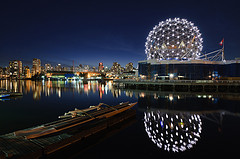Juniper Tremper
Scientific Writing 105-19
Geneseo, NY
~190 words
Science and Art are Equally Valuable
Juniper Tremper
We live in a world where some careers are valued more than others, but in particular, we have the image of the starving artist. Glenn McClure’s insight on artists in Antarctica is most fascinating because due to the harsh environment, everyone is equally at risk of injury or death inflicted by the cold, no matter whether they study science or observe scientific studies to produce art. He specifically pointed out how if someone is negligent of directions and GPS, they stand no chance against the disorienting whiteness- regardless of what they have a college degree in.
It’s intriguing to note that we don’t need scientists more than artists, nor vice versa. The scientific work would not be presentable to the public without the artistic representation. In addition, McClure tells us that during unoccupied time on the science base, the whole population of scientists and artists comes together as one, to play music and keep each other sane by entertainment. Our goal as students and humans should be to adopt the successful co-dependence of science and art in instances that are less life-and-death and more day-to-day. We need both subjects to succeed as humans.
